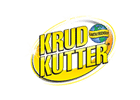By Jo Medico
For the growth-driven CEO, the value of a client extends far beyond the initial contract. Sustainable growth isn’t just about reducing your Customer Acquisition Cost (CAC); it’s about maximizing the Lifetime Value (LTV) of every client you acquire. While Google Ads is great for immediate lead generation, true LTV is often solidified by a strategy that keeps clients engaged, educated, and loyal long after they’ve signed the dotted line.
This is the power of using SEO content to cultivate the 5-Year Customer. Instead of viewing SEO solely as a tool for attracting new leads (top-of-funnel), you must strategically utilize it as a powerful retention and growth engine (mid- and bottom-of-funnel). This approach turns your website into an indispensable resource, embedding your service deep into your client’s operational success for years.

The Retention Problem: Why Clients Drift
Clients don’t leave because your service suddenly fails; they often leave because they feel they’ve plateaued, they stop seeing new value, or a competitor pitches a solution to a problem they didn’t know they had.
To secure the 5-Year Customer, your SEO content must proactively address these evolving needs, reinforcing your expertise every step of the way. This requires moving beyond introductory “What Is…” articles and delivering content that is sophisticated, tactical, and targeted at an existing user or partner.
Content Strategy for the 5-Year Customer
The journey to keeping a 5-Year Customer is broken into three crucial content stages:
1. The Onboarding/Implementation Stage (Months 1-6)
- Focus: Efficiency and Quick Wins. Content should address common pain points and technical hurdles immediately after purchase.
- Examples: Detailed “How-To Guides” on integrating your service, “Checklists” for quick implementation, and content addressing initial setup FAQs.
- SEO Goal: Rank for long-tail, hyper-specific problem keywords related to implementation (e.g., “troubleshooting CRM API connection errors”).
2. The Growth/Optimization Stage (Months 7-36)
- Focus: Maximizing Results and Proving Value. This content helps the client get more from the service and justifies renewal.
- Examples: Advanced “Optimization Guides,” “Case Study Breakdowns” showing how high-performing peers use the service, and “Expert Interviews” on industry trends that directly affect your client’s business.
- SEO Goal: Rank for terms related to expansion and value addition (e.g., “advanced segmentation techniques using [Your Tool]”).
3. The Retention/Expansion Stage (Months 37+)
- Focus: Future Planning, New Value, and Expansion. This content aims to secure renewal and open the door to cross-sells or upsells, leading to the 5-Year Customer.
- Examples: “Future-Proofing Your Strategy for 2026,” “Product/Service Comparison Charts” highlighting your newest features, and “Strategic Audit Templates.”
- SEO Goal: Rank for keywords related to high-level strategy and future investment (e.g., “cost-benefit analysis of upgrading to premium service tier”).
The ROI of Retention-Focused SEO
Investing in this type of retention-focused SEO content may seem counterintuitive compared to chasing new leads, but the payoff is massive:
- Increased Loyalty: You become the client’s trusted knowledge base.
- Reduced Support Load: Clear, accessible content preempts support tickets, saving your team time and money.
- Natural Upsells: When content clearly explains the benefits of an advanced feature, the client pre-sells themselves on the upgrade.
By making the content investment in your current client base, you turn satisfied customers into deeply loyal, long-term partners, securing the profitable 5-Year Customer and dramatically improving your overall business LTV.
Are your current SEO efforts only focused on the initial lead acquisition? Ready to build a predictable, scalable system that maximizes the Lifetime Value of every client?
Contact DoubleDome Digital Marketing today for a free SEO strategy session. We help companies like yours build comprehensive SEO strategies that not only attract qualified leads but also secure the long-term loyalty needed to create the profitable 5-Year Customer.








